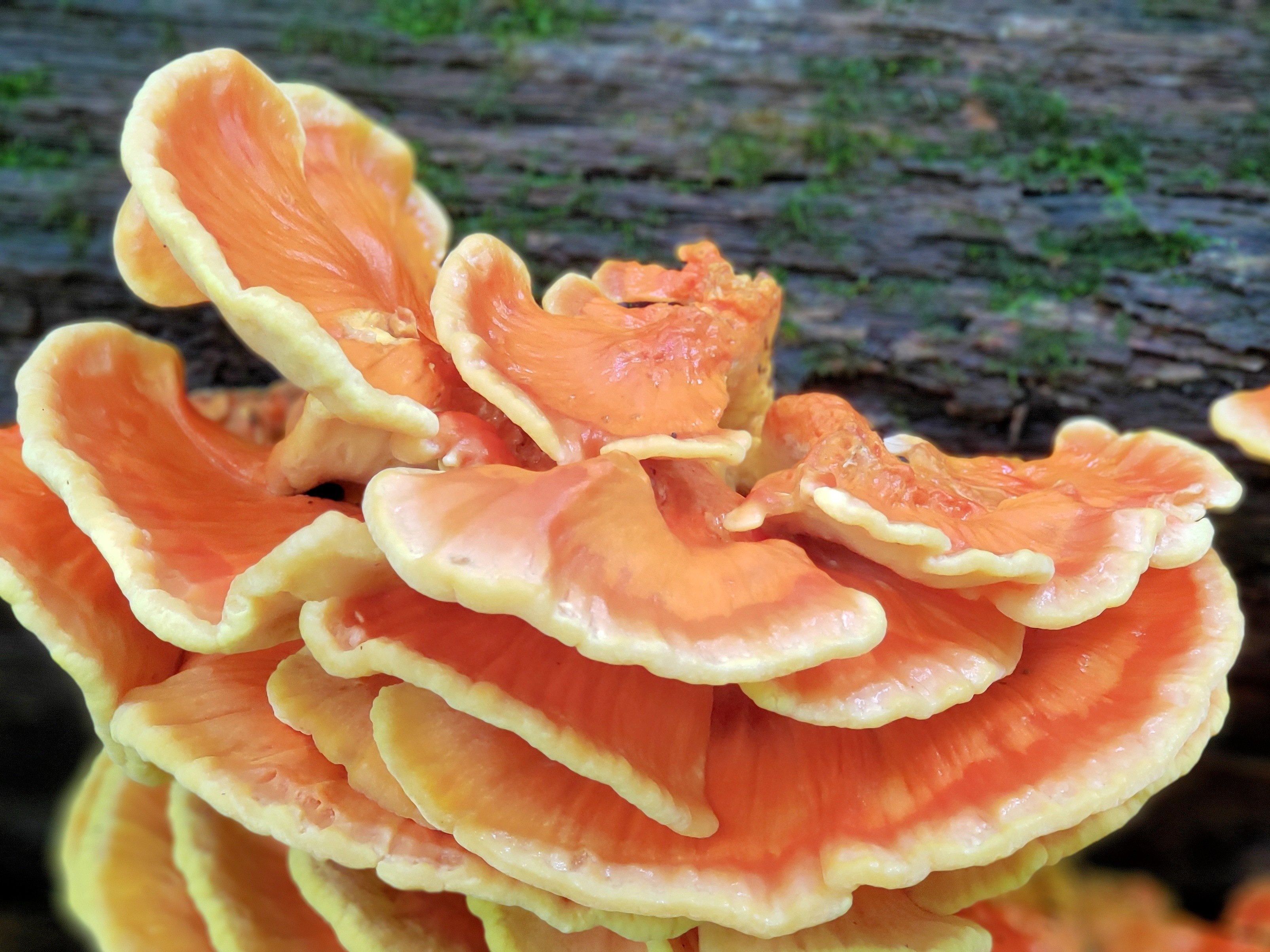

Phylogenetic analyses of ITS, nuclear large subunit and mitochondrial small subunit rDNA sequences from a variety of North American species have delineated five distinct clades within the core Laetiporus clade: This fungus causes a brown cubical rot and embrittlement which in later stages ends in the collapse of the host tree, as it can no longer flex and bend in the wind. From late spring to early autumn, the sulphur shelf thrives, making it a boon to mushroom hunters and a bane to those concerned about the health of their trees. The sulphur shelf mushroom sometimes comes back year after year when the weather suits its sporulation preferences. Edibility traits for the different species have not been well documented, although all are generally considered edible with caution. coniferica (common in the western United States, especially on red fir trees). Similar species include Laetiporus gilbertsonii (fluorescent pink, more amorphous) and L. Older brackets become pale and brittle almost chalk-like, mildly pungent, and are often dotted with beetle or slug/woodlouse holes. Young fruiting bodies are characterized by a moist, rubbery, sulphur-yellow to orange body sometimes with bright orange tips. Laetiporus species are parasitic and produce brown rot in the host on which they grow. It is most commonly found on wounds of trees, mostly oak, though it is also frequently found on eucalyptus, yew, sweet chestnut, and willow, as well as conifers in some species. The mushroom grows in large brackets – some have been found that weigh over 45 kg (100 pounds). These shelves are made up of many tiny tubular filaments (hyphae). Individual "shelves" range from 5 to 25 cm (2 to 10 inches) across. from Anamalai Hills, Southern Western Ghats, India Many of our readers find that subscribing to Eat The Planet is the best way to make sure they don't miss any of our valuable information about wild edibles.Laetiporus sp. Cook approximately 10 minute.Įnjoy this chicken of the woods recipe as is or add it to anything in place of chicken. The oil may quickly be absorbed into the mushrooms, this is ok, do not add more oil.Īdd salt and pepper to taste flipping and stirring the pieces occasionally to make sure all sides are cooked.

Put chopped chicken of the woods in the pan and begin cooking. Once olive oil has warmed then add garlic and cook for 1 to 2 minutes. Place olive oil in a small frying pan on medium heat. 1 cup chopped chicken of the woods mushroom.This recipe is best with soft juicy chicken of the woods specimens older mushrooms may be too dry. This is a simple recipe where chicken of the woods is fried in olive oil with salt, pepper and garlic. clean the caps by wiping them with a damp cloth. Young caps are usually best, even very young caps that haven’t quite formed yet.
#Chicken of the woods free
Choosing the best specimens for cookingĬhoose a mushroom cap that is soft and free of marks, such as insect bites and damage. So please always exercise caution when trying new foods and only taste a sample if it’s your first time trying the mushroom. Some people have adverse reactions to chicken of the woods due to a number of things including indigestion and allergic reactions. All you’ll need is a log and a drill.īefore we get into the chicken of the woods recipe I’d like to mention a few things. You can also get a chicken of the woods growing kit to grow your own chicken of the woods.

#Chicken of the woods how to
To find out more information about chicken of the woods including where to find it and how to identify it visit to our chicken of the woods article. It’s easy to identify and has no known toxic look a likes. Get more information and sign up Here.Ĭhicken of the Woods Chicken of the WoodsĬhicken of the woods is a great mushroom for beginners. Hosted by Master Naturalist Rebecca Lexa. Want to learn the basics of Mushroom Hunting? Join our virtual class on September 17th.


 0 kommentar(er)
0 kommentar(er)
